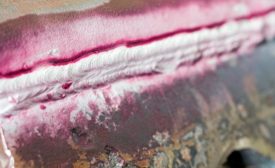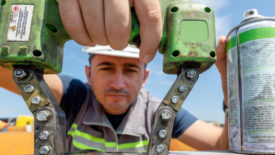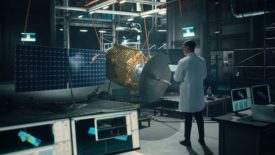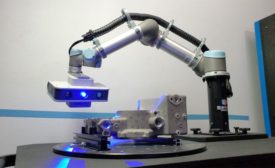NDT
NDT Trends
Manual means of performing NDT and human evaluation of the results is trending more and more to automated, digitized and artificial intelligence interpretation of the results whenever economically possible.
Read More
Back2Basics
5 Things to Consider When Choosing a Mag Particle Yoke [Checklist]
In this article we outline some key factors to consider when selecting the right electromagnetic yoke or contour probe for magnetic particle testing.
October 10, 2022
NDT | Back 2 Basics
Robotic Computed Tomography Ready for NDE 4.0
Besides the automation of a CT system for NDE 4.0, it is very important to digitize the whole process for NDE.
August 8, 2022
NDT | Phased Array
The Hilbert Transform’s Role in Transforming TFM
With improvements to TFG technology, more users of conventional phased array are showing interest in incorporating the method into their procedures.
August 8, 2022
NDT | Certification
Certification Records for Nondestructive Testing (NDT) Personnel
Before an individual can become certified in an NDT method, a number of prerequisites must be fulfilled.
August 8, 2022
NDT | Eddy Current
From Innovation to Sustainability: How ECA Makes New Technologies Durable
The industries that are most inclined to adopt advanced NDT technologies such as eddy current array are often those oriented toward innovation.
August 8, 2022
Aerospace | Back 2 Basics
Aerospace Quality Management System (AQMS) Certification
If you really want a QMS to work, you need to work at it.
July 8, 2022
Aerospace | Leak Testing
The How’s and Why’s of Leak Testing
In the aerospace field, old leak testing methods are replaced to improve efficiency and minimize time on the ground.
July 8, 2022
Aerospace | Additive Manufacturing
Additive Manufacturers Don't Get Free Pass on Quality
July 8, 2022
Aerospace | NDT in Aerospace
CT-Scan Data Analysis and Visualization for Aerospace NDT
For as long as there has been commercial and military flight, aircraft component suppliers have been charged with providing dimensional and process control-related data.
July 8, 2022
Stay in the know with Quality’s comprehensive coverage of
the manufacturing and metrology industries.
eNewsletter | Website | eMagazine
JOIN TODAY!Copyright ©2024. All Rights Reserved BNP Media.
Design, CMS, Hosting & Web Development :: ePublishing



.jpg?height=168&t=1659976174&width=275)





